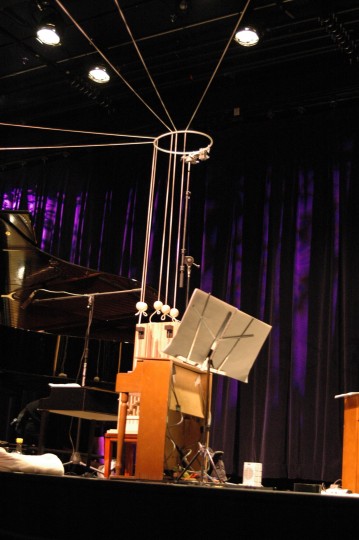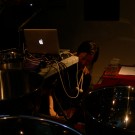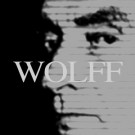 I heard a lot about composer/percussionist Nathan Davis before I actually met him a little over a year ago. When Concert Artist Guild informed me that they received funding for the 2007 winners to commission a new work, I thought of Nathan instantly.
I heard a lot about composer/percussionist Nathan Davis before I actually met him a little over a year ago. When Concert Artist Guild informed me that they received funding for the 2007 winners to commission a new work, I thought of Nathan instantly.
The toy piano is often thought of as a percussion instrument. I thought it would be interesting to get a percussionist’s influence on the toy piano. Four months after our initial meeting, Nathan presented me the score of “Mechanics of Escapement.” Just by looking at the score, I was so touched and impressed by what he had written; You can always tell when a composer had been thoughtful in his/her writing.
Nathan had borrowed one of my 2-octave Schoenhut pianos for those months he was composing. The piece was written specifically for that piano and click to read more. He brought out the mechanical nature of the instrument with the sounds of the plastic keys lifting, and he also highlighted the melodic nature of the instrument with certain notes that have a beautiful ring.
I knew that he had been thinking about incorporating a clock chime(the insides of a grandfather clock), but I had no idea that Nathan was going to commit himself to weeks of sleepless nights inventing a new instrument for me to play along with the toy piano. The clock chime instrument is made of long metal rods, therefore lower in pitch. Most of the rods are struck by a small chime hammer and others are bowed to create the higher harmonics. He had essentially built a bass toy piano. For several weeks, Nathan was ordering parts (such as a variety of springs, bolts and the hammers of a grandfather clock) and building an instrument with the help of his neighbor Jonathan Roche, who does a lot of woodwork. The two of them would start at 1am and work until 10 in the morning, crafting the most playable and beautiful grandfather clock/bass toy piano instrument.
I had been practicing the new piece with my toy piano and clock chimes until two night before the official debut, when Nathan showed up at my apartment with a bag of medium wooden boxes, each with one chime inside of them. All of a sudden he started to set up these boxes in the air (with mic stands) all around my apartment. I felt that each of these boxes were their own being inside of my home. He had built an installation with surround-sound chimes. I was stunned, curious and mystified all at the same time.
Just to clarify, the piece is for toy piano, clock chimes, and five wooden single chimes placed around the performance space. The single chimes are played by connecting the hammer mechanism to a piece of string that I am able to pull from the stage. I can honestly say that I gained a new perspective of the toy piano in his writing. I have always been an advocate of the toy piano as a serious musical instrument, but with this new piece, Nathan brought it to a new level. There really are no good words to describe the piece, but you can view it now on my “Look” page.
 We were really bummed to cancel our concert at Southern Theater (Minneapolis) on April 26th because of economic straits. At a time when many music and arts venues are struggling to stay afloat, ICE decided to bring the concert to curious audience members in a different way—online! On April 26th, we decided to do a performance/recording session at the Brooklyn ICEhaus that was then streamed by WQXR. The evening featured two new pieces that I wrote from my ICElab, including Beneath A Trace of Vapor for flute and electronics and Glass Clouds We Have Known for toy piano, bass clarinet, flute, bowls, keyboard,electronics and video. We are unfortunately unable to capture the visual world of this piece without a theater, but be sure to check back and see it’s New York premiere scheduled to take place in November of 2011. The concert also featured works by ICElab composers Mario Diaz de Leon and Steve Lehman. Thanks to WQXR for broadcasting our performance!
We were really bummed to cancel our concert at Southern Theater (Minneapolis) on April 26th because of economic straits. At a time when many music and arts venues are struggling to stay afloat, ICE decided to bring the concert to curious audience members in a different way—online! On April 26th, we decided to do a performance/recording session at the Brooklyn ICEhaus that was then streamed by WQXR. The evening featured two new pieces that I wrote from my ICElab, including Beneath A Trace of Vapor for flute and electronics and Glass Clouds We Have Known for toy piano, bass clarinet, flute, bowls, keyboard,electronics and video. We are unfortunately unable to capture the visual world of this piece without a theater, but be sure to check back and see it’s New York premiere scheduled to take place in November of 2011. The concert also featured works by ICElab composers Mario Diaz de Leon and Steve Lehman. Thanks to WQXR for broadcasting our performance! Last night I went to see fellow
Last night I went to see fellow  I heard a lot about composer/percussionist Nathan Davis before I actually met him a little over a year ago. When Concert Artist Guild informed me that they received funding for the 2007 winners to commission a new work, I thought of Nathan instantly.
I heard a lot about composer/percussionist Nathan Davis before I actually met him a little over a year ago. When Concert Artist Guild informed me that they received funding for the 2007 winners to commission a new work, I thought of Nathan instantly.